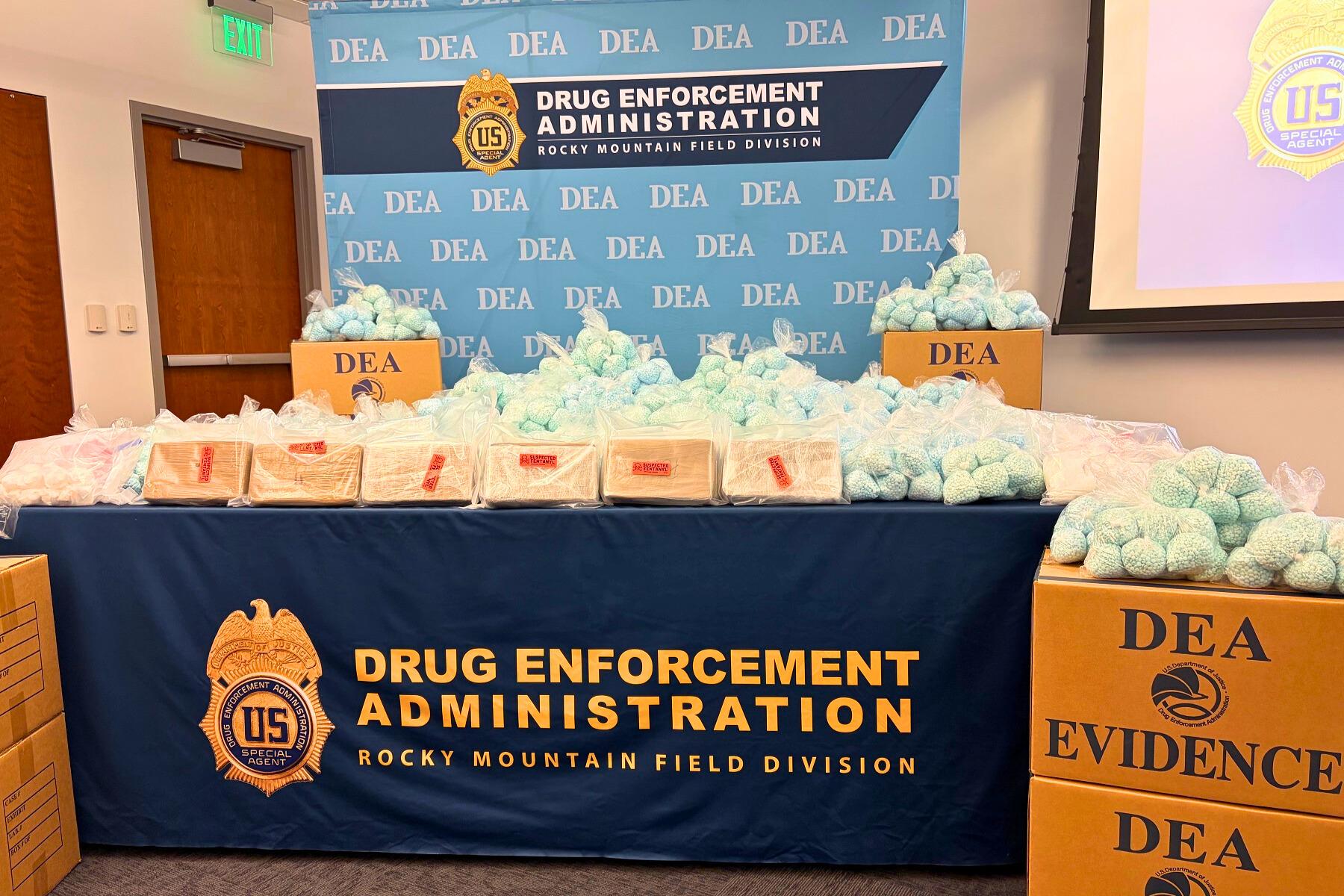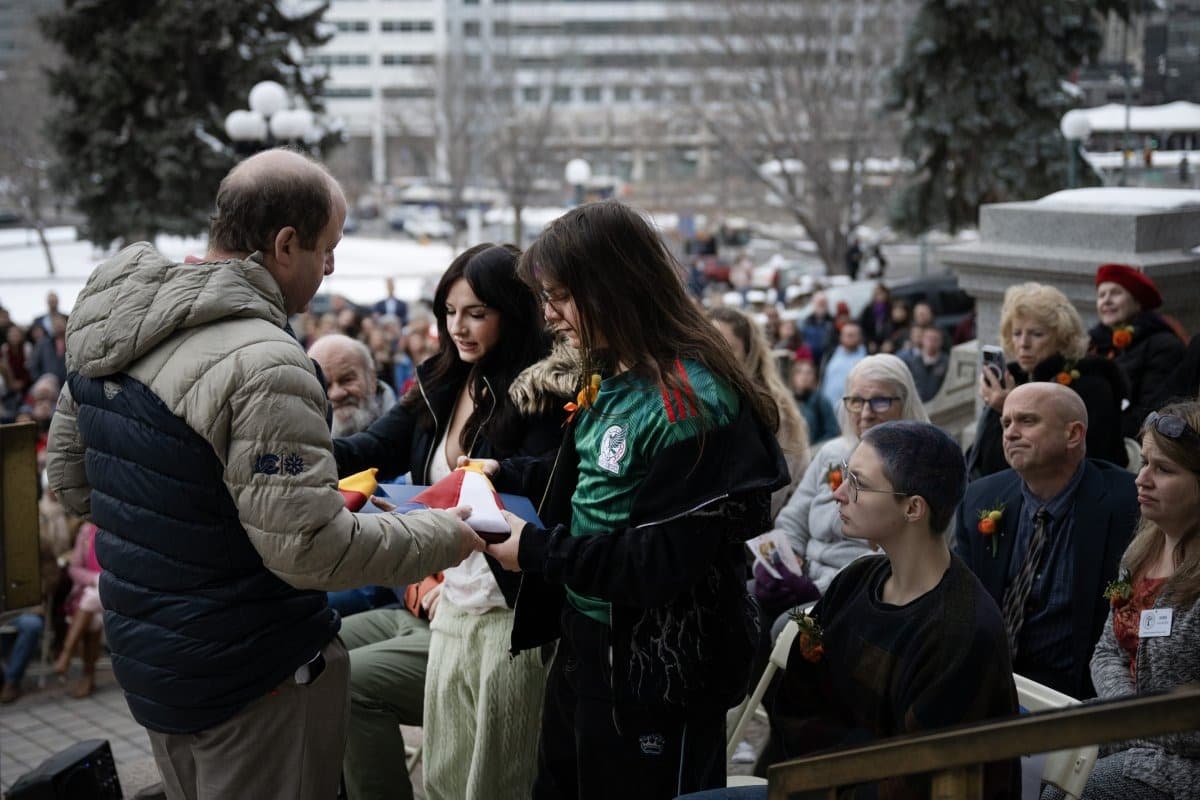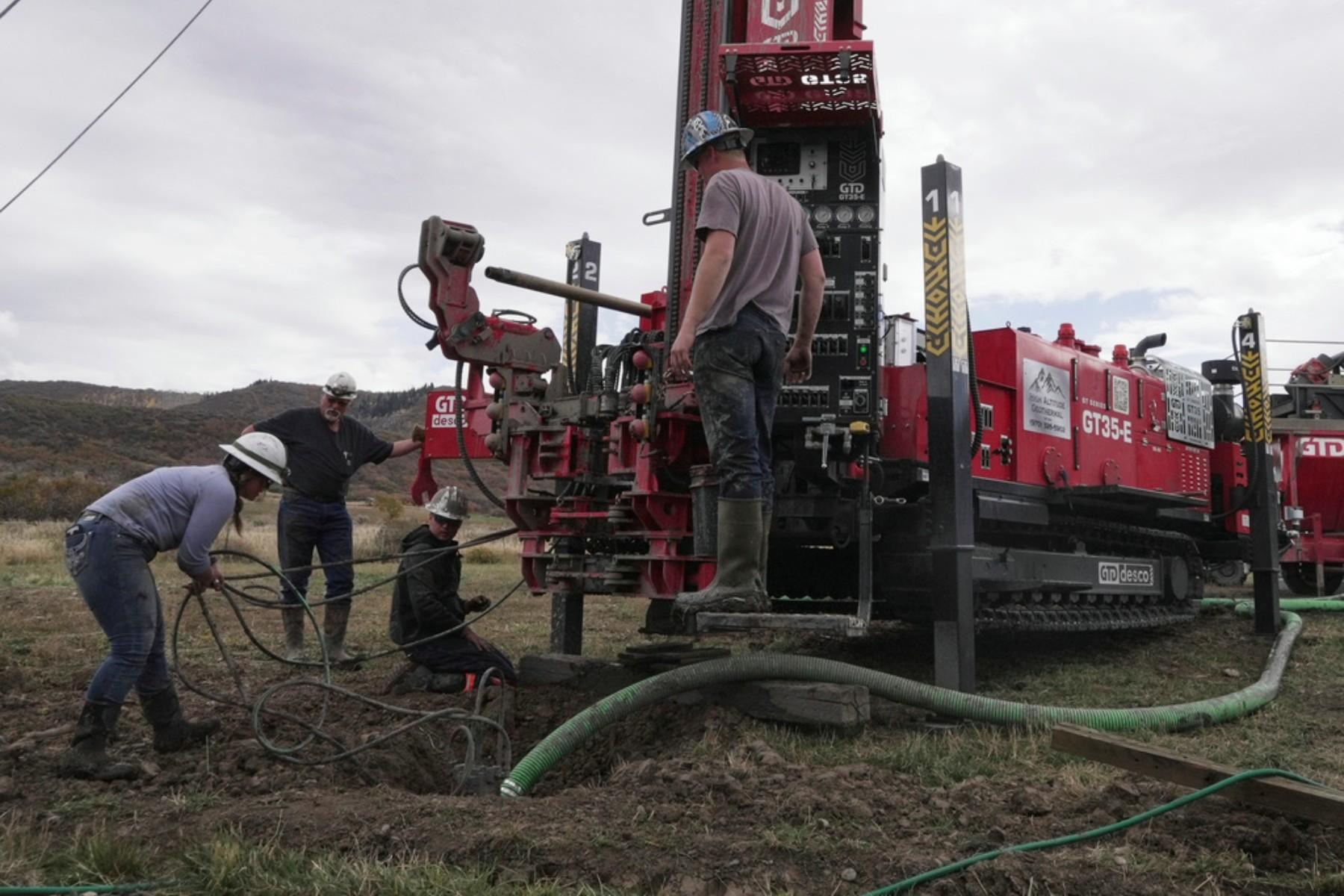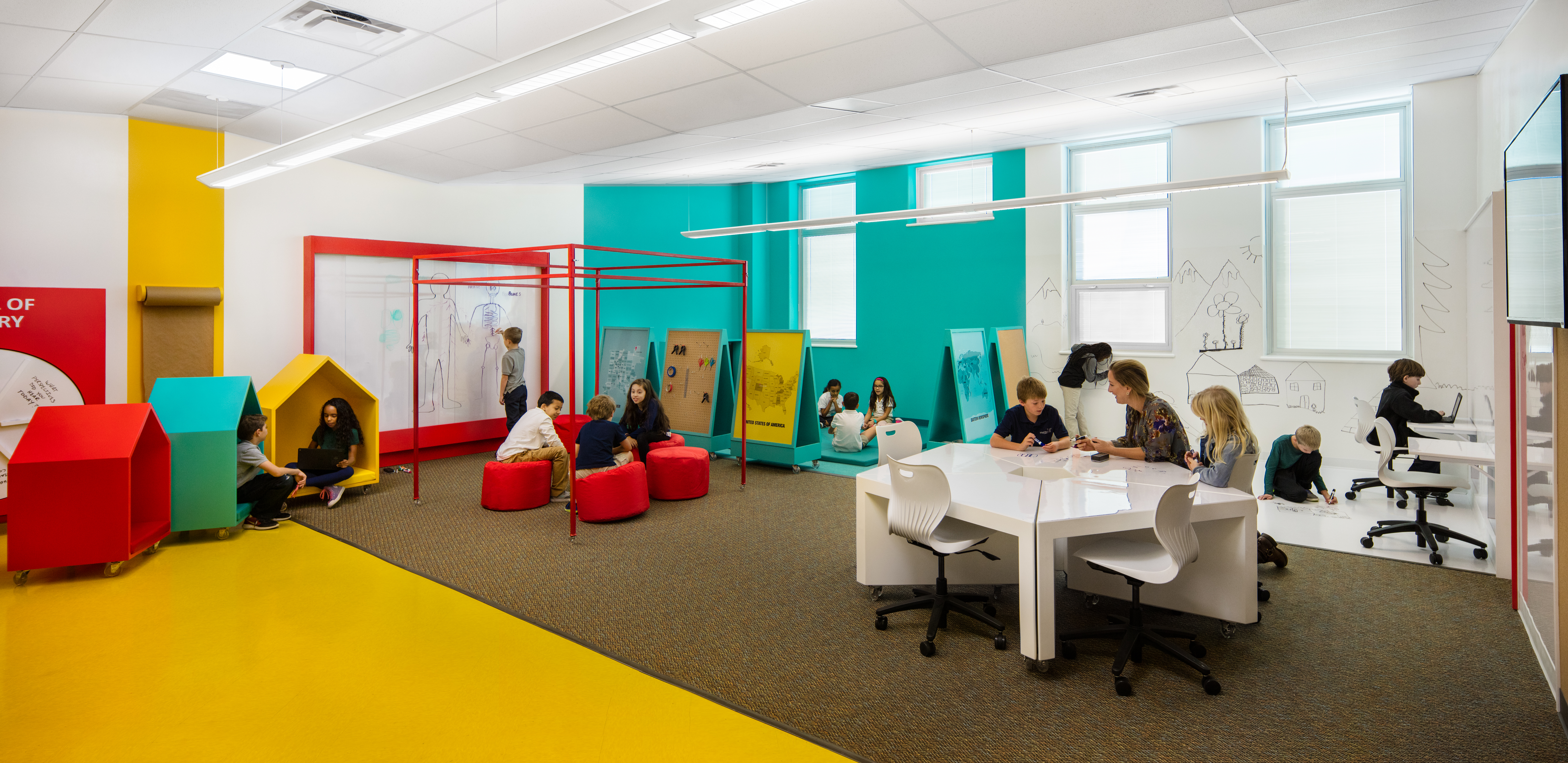
Danish Kurani, who designs spaces for education across the U.S. and in India and Australia.
His work includes a new classroom at Denver's High Tech Elementary School in Stapleton, where administrators like Principal Amy Gile believe that kids need new skills for the new century.
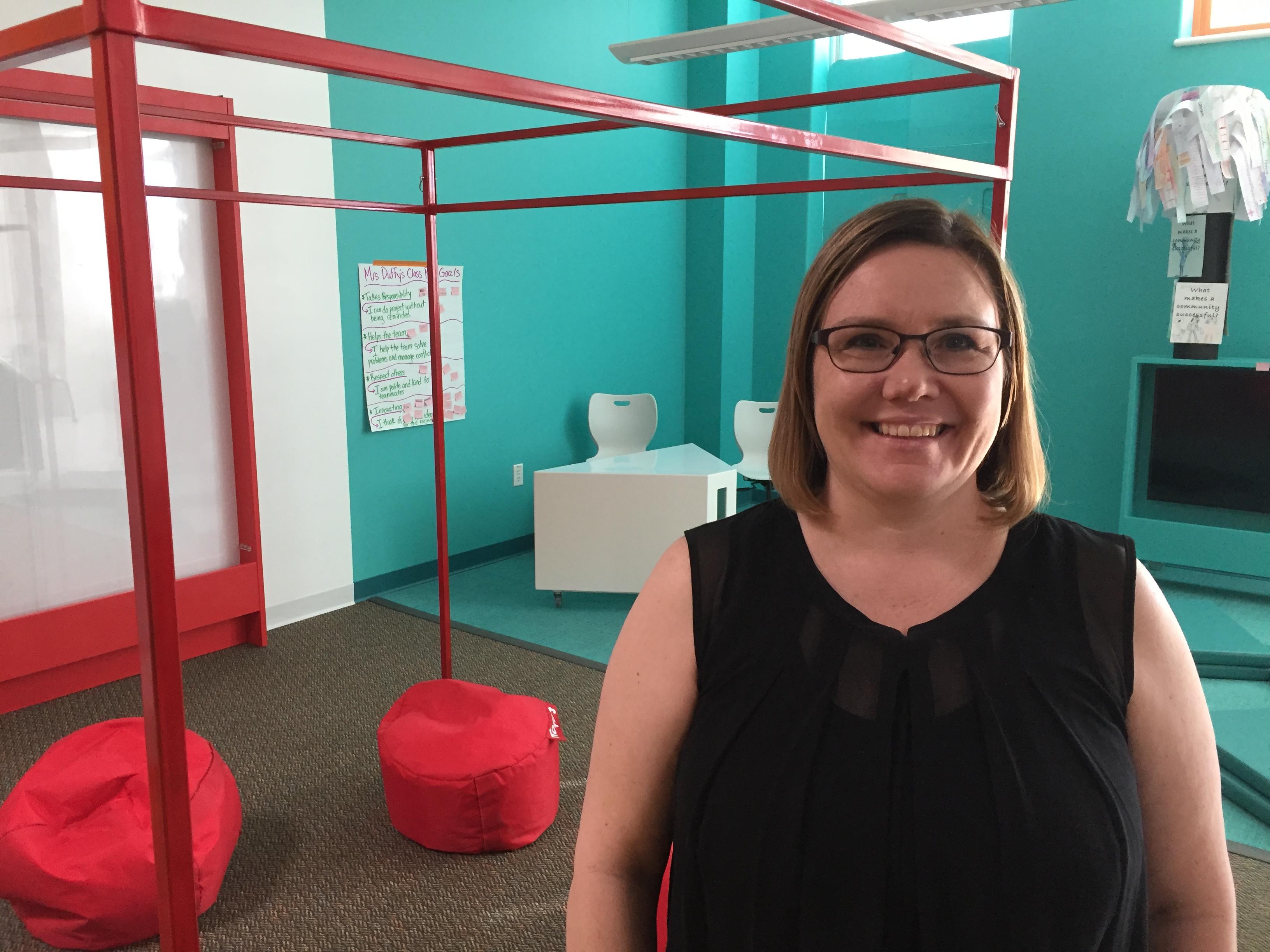
"We know for 21st century skills and really any career, you have to work in a team and collaborate and share ideas," Gile says, sitting in the classroom at an unusual type of desk. It has wheels, so it can move around the room, and a whiteboard on the top surface, so kids can write on it.
Elsewhere in the room, dubbed the "Collaboratory," whole walls and sections of the floor are also whiteboard material, meant to be scribbled on. Another portion of the room is painted green, with pads of the floor where kids can huddle around a screen and do a lesson over Skype. Another feature of the room is a frame for a tent, with bean bag chairs underneath.
"We designed this space with the idea that kids like to be in a small space or box, but we know as teachers we can’t be where we can’t see them," Gile says. "So this is like our invisible box, you have to be in the red box when you’re problem solving."
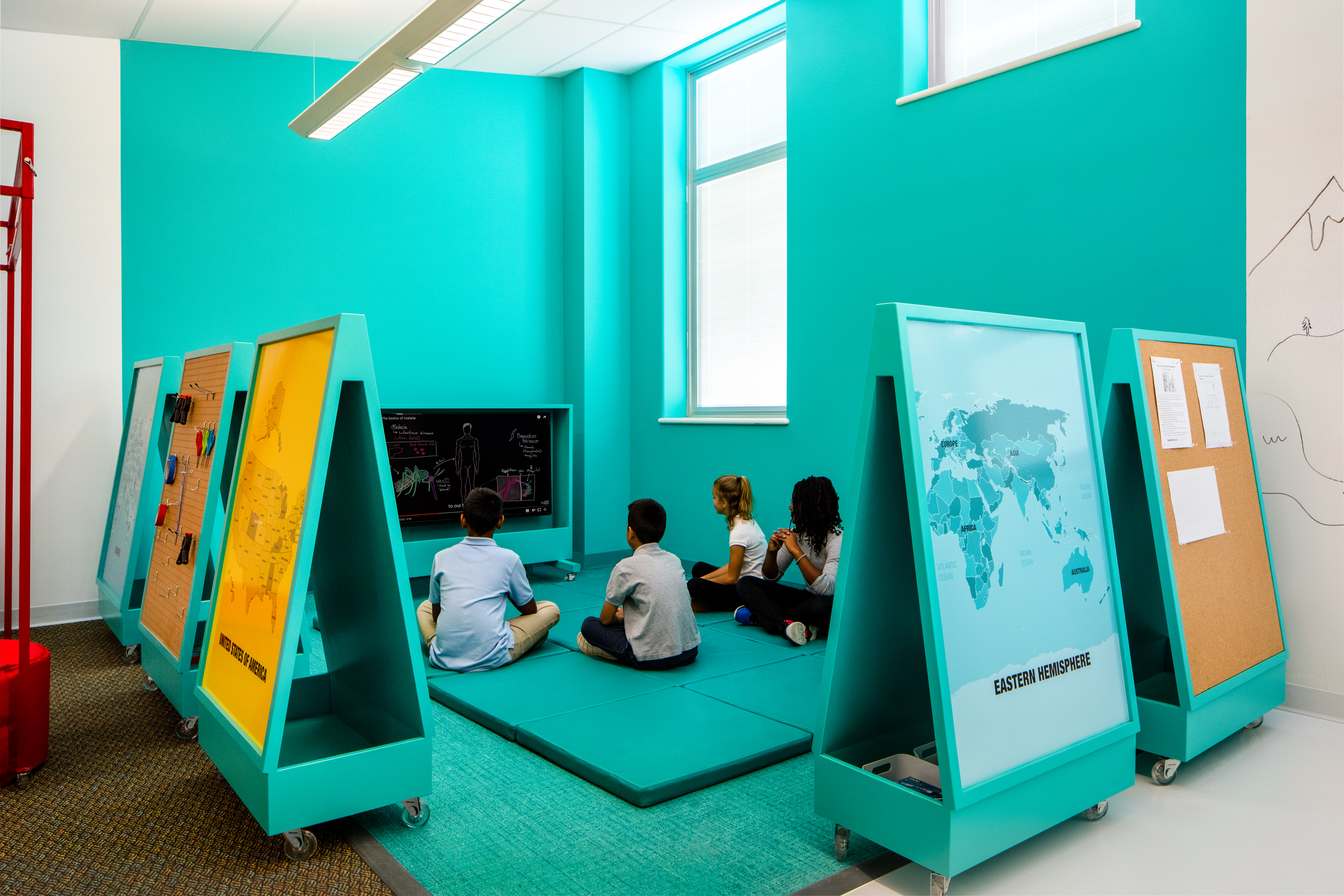
Other than looking inviting, with bright colors and soft surfaces, the room is meant to facilitate various kinds of learning, focused on teamwork or presentation skills, for example, and it's meant to motivate students to get more involved in their own learning. The room is also supposed to let teachers group kids by skill levels, and have them work on slight variations within the same lesson.
High Tech Elementary teachers and administrators are embracing these concepts on a smaller scale, too. Elizabeth Babowice teaches second grade, and she has several different kinds of seats for kids to sit on in her classroom, including a cardboard stool that is big enough for students to sit cross-legged, and rubbery purple discs she calls "wobble stools."
"So for example if a kid needs a wobble stool, we talk about why you need it, are you jittery, fidgeting, about to fall off your chair, then it’s OK, you can get a wobble stool," she says.

Smaller changes like new chairs -- some of which Babowice says she got for free -- are important to helping DPS spread this concept across the district, because the "Collaboratory" cost about $30,000, according to Peter Piccolo, who leads the district's innovation lab called the Imaginarium. His group worked with elementary school administrators and the designer, Danish Kurani, on the project, and Kurani says that classroom construction normally costs more. Piccolo says DPS plans to take what it learned from the experiences at High Tech Elementary and another school, and apply it elsewhere in the district for less money.
Ultimately, Piccolo hopes parents across the district will start to demand that schools teach more collaborative, creative lessons, and demand that schools adapt their spaces accordingly.
"It is a little bit alarming when you walk into a school and the teacher's not at the front lecturing, and kids are not quiet, sitting in rows in their chairs," he says. "But, you know, the world has changed since 1850, since that model of school was designed. Just over the last two decades, the world is quite a bit different, and what kids need to know and be able to do is quite a bit different."
Kurani's other projects include high schools in New York City designed to help Black and Latino youth who need mentoring and coaching. "The classes are more interdisciplinary, more real-world, relevant," Kurani says. So he designed rooms to help students and educators build relationships, and work on creative projects like videos and sculptures.
He says before starting a new design, he and his staff spend a lot of time observing students and teachers, and talking with them about what they want in their classrooms. For Denver's High Tech Elementary, in particular, he says he had to put out several different prototypes before he and the school figured out exactly what worked.
Kurani spoke with Colorado Matters host Ryan Warner.

